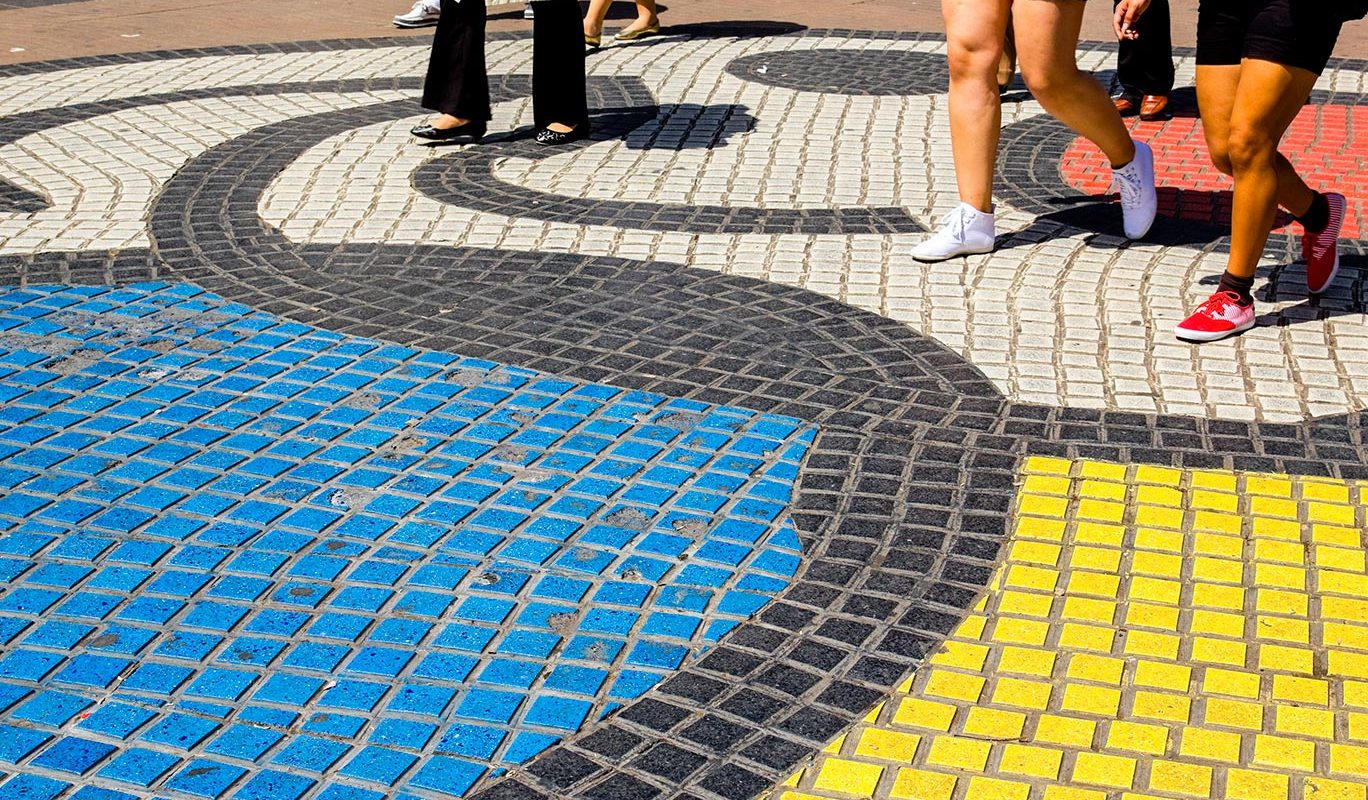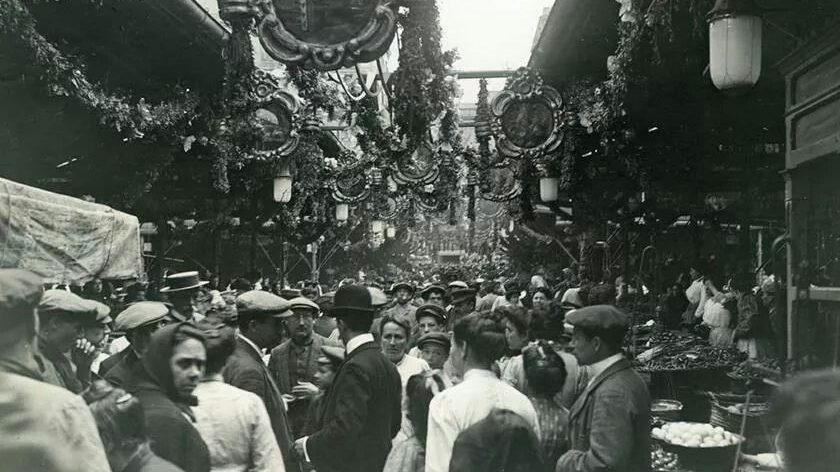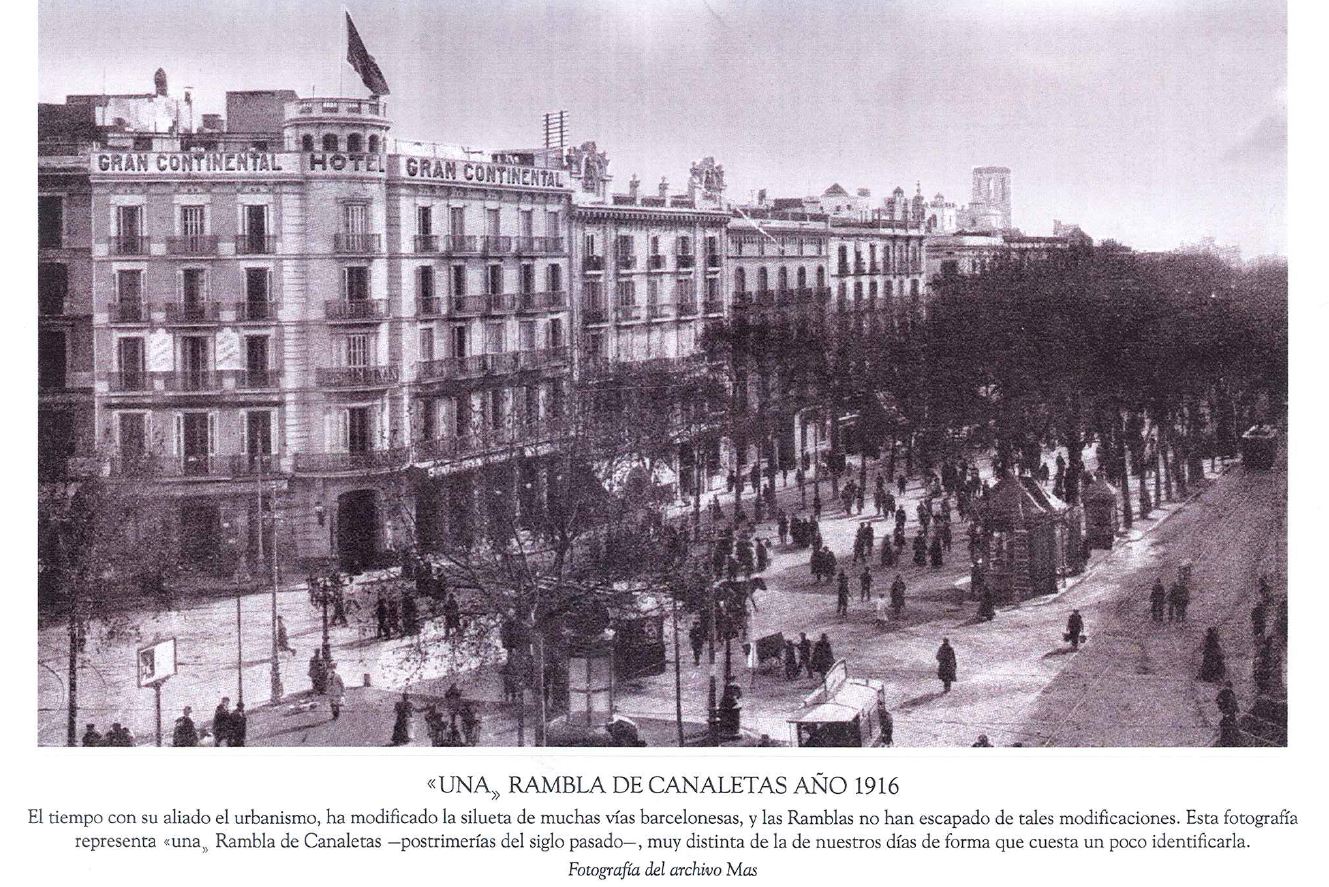If you’ve ever visited Barcelona, you’ve walked on La Rambla. Almost impossible to avoid, this tree-lined street extends from the famous Mirador de Colom with its grand Columbus statue at the waterfront up to the city centre, Plaça de Catalunya. Bordered by the Gothic Quarter and connecting the old city to the more modern Eixample, La Rambla is often known in the plural, Las Ramblas, as it is in fact a collection of smaller streets comprising one main corridor of shops, cafes and people. Trees have been a part of the Rambla experience and charm since the 1700’s, with birch, elm, and acacia all making an appearance for over 300 years. The name La Rambla comes from an Arabic word for ‘sandy riverbed’ and indicates the origin of the street, as it started its life as a stream.
With a history that extends back to 1440 when construction began, there are no shortages of stories (virtually every building lining the street has one to tell). Here are three of our favourite lesser-known La Rambla stories to give you a different perspective of its most famous landmarks.
Art You Can Walk On
The bright colours of Joan Miró’s Pla de l’Os mosaic are part of the modern history of the street and carry a story that goes back even further. The Boqueria Gate once stood on the same spot, a beautiful gate taken from Almeria as a trophy of war that disappeared in the 1700’s during the demolishing of the city walls. Fitting though that with the loss of one piece of art a new piece was chosen to replace it 200 years later. The ‘Miró Pavement’ was designed to be part of the city and part of everyday life, with no special protection from the 80 million people that cross La Rambla every year. Although by its 30th anniversary, the 6000 tiles received a needed and deserved restoration. Commissioned as part of a series to welcome people to Barcelona, this one of a kind unique artwork by a world-famous artist is just one of many of Barcelona’s outside artworks that make it a fascinating gallery city.

Drink the Water and Fall in Love
It is said that if you drink from the Canaletes water fountain on La Rambla, you will ‘always be in love with Barcelona and however far away you go, you will always return’. Then again, it might be the comfortable beds and free buffet at Hotel Continental that will keep you returning. Either way, Barcelona is rarely only visited once.
Located at the top of La Rambla, this unassuming water fountain is shrouded in legend. And while you might just walk past it without noticing it on most days of the year, when FC Barcelona takes a victory you can’t miss it. The fountain becomes the hub of Barca fans for celebrations, sometimes numbering into the thousands for big game victories.
Since its establishment, the quality of the water and its position ensured this water fountain was a popular meeting point. But in 1901 a small brandy bar was set up nearby and over the decades, drinking (more than just water) at cafes and bars nearby became synonymous with the fountain. The football connection was said to have started in the 1930’s with the arrival of La Rambla de Canaletes newspaper offices nearby. The newspaper kept football fans up to date with the latest scores with blackboards updated as soon as the scores arrived. This combination of famous meeting point, well known drinking spots and sports scores made for what is now part of Barcelona history.
The Hotel Continental balconies are also known as the best spot for recording the crowds of fans for TV and news coverage.

Convent, Cemetery or Cuisine?
La Boqueria is one of the most famous must-visit attractions on La Rambla. Over 2500m2 with 300+ market stalls you can get every foodstuff here, with a focus on the best of local specialties. No wonder it was a previous recipient of a Best Market in the World award. La Boqueria might be synonymous now with bright colours and loud market selling but started life as something very different. The market space was originally a home to a community of priests, the San Jose de los Carmelitas convent, and only after the building was destroyed by fire, did it begin a new life as a market. Spooky stories and happenings are also believed by many to occur in the market because of its neighbouring Corralet cemetery, the home to the dead from a 14th century hospital where the homeless and the unknown were buried.
While the name Boqueria is widely believed to have come from an association with the most popular products sold here (the meat of the ‘boc’, or male goat), some others have a less complimentary meaning. It’s suggested to have come from the Catalan word ‘badoqueria’, or ‘place full of stupid people’. So, called, because those original gates were so impressive that people walking on La Rambla couldn’t help but stop and stare dumbfounded.
We invite you to visit La Rambla and discover the history of the streets, the people and the Hotel Continental for yourself.


